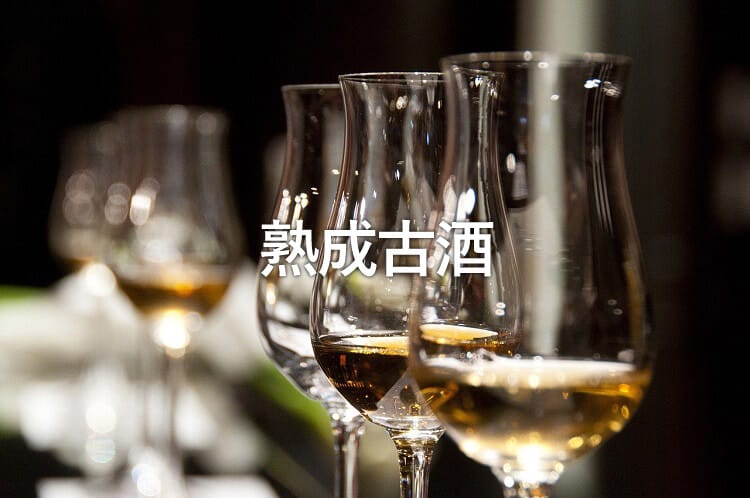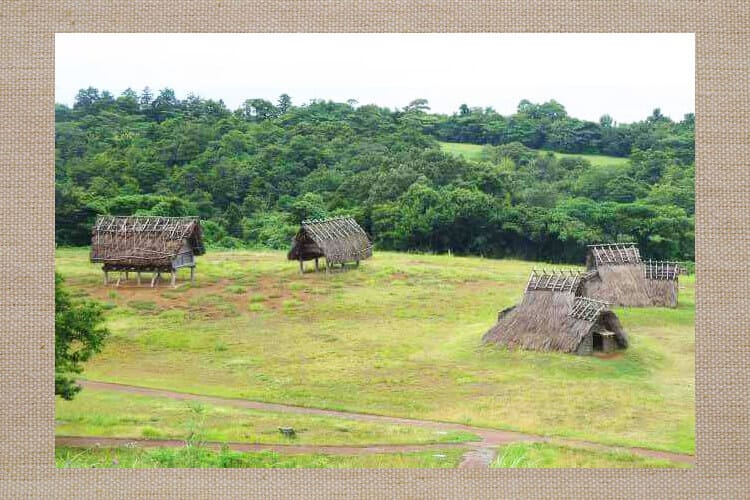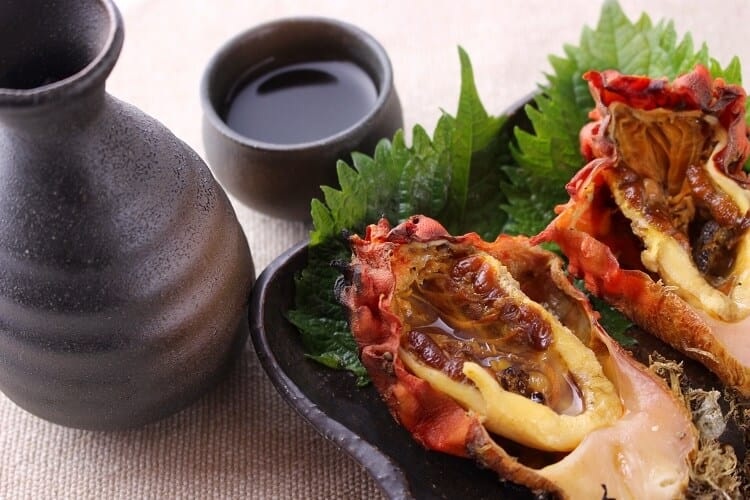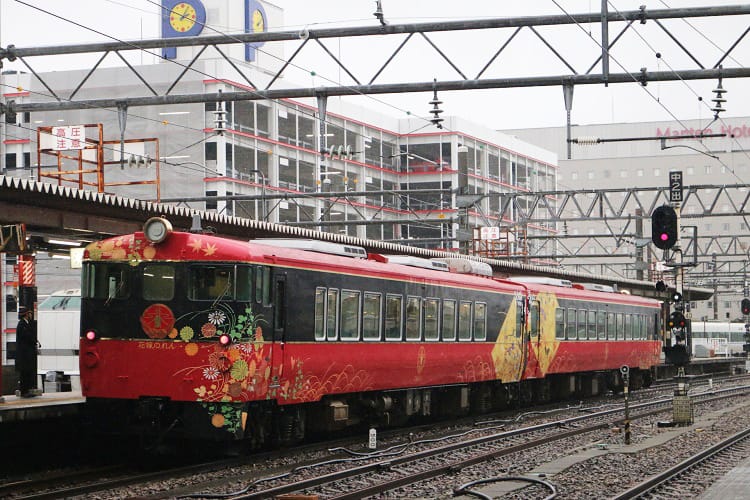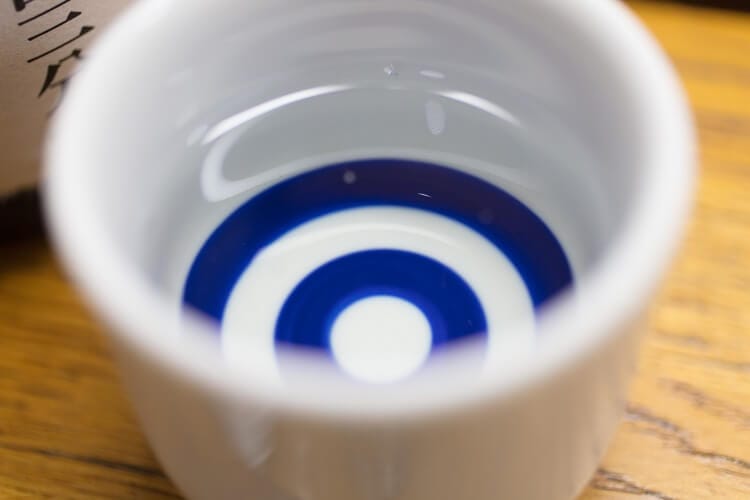
Do you know what kind of process sake is made? This timeSake production processI would like to explain in detail.
Sake is an ancient Japanese sake and I think it is a familiar sake for the Japanese.
Let's know how Japanese sake is made as a Japanese.
Sake production process (1): polished rice-washed rice-steamed rice
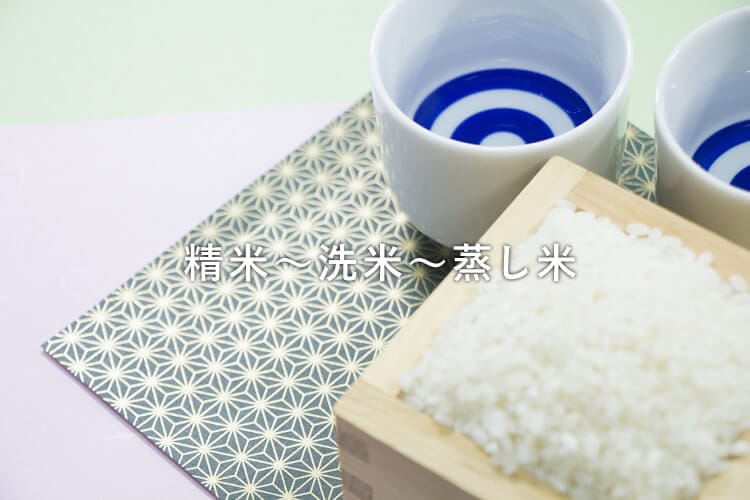
Since rice begins to oxidize from the moment it is polished, it is said that the most delicious way to eat rice is to polish it just before cooking.
The rice used for sake brewing is basically the same,Rice polished just before brewing sake preserved in brown riceTo do.
The rice used for sake brewing is often sharpened..
However, if you cut it all at once, it will lead to cracking and deterioration of the taste.
Good sake brewing begins by carefully polishing brown rice over timeIt is
After finishing the rice polishing, the next step is to wash the rice.In sake breweries, sharpening rice is called "washing rice" or "rice washing".
In sake breweries that are carefully brewed, rice is washed in small units from 5 to 10 kilograms.
In the old days, colander was washed with bare hands, but nowadays there are an increasing number of breweries that use rice washing machines that gently wash rice using water. After washing the rice, immerse it in the prepared water.
Sake rice is steamed rather than cooked.
Steamed rice has a different moisture content from cooked rice, and the moisture content of cooked rice60%-70%In contrast, steamed rice has a moisture content30%-40%Has become.
The amount of water that is very prone to the growth of koji molds in sake brewing is about 30%Therefore, the moisture content of steamed rice is just right.
In the process of steaming rice,Large steamer "Koshiki" that has been passed down since ancient timesIs used.
Sake production process ②: Sashimi
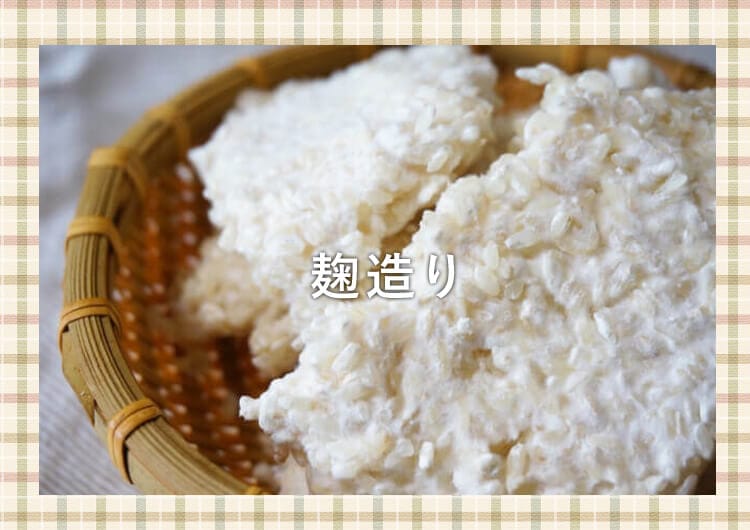
When the temperature is low, germs do not grow and you can make clear and beautiful sake in a clean environment. So sake brewingBasically cold winterHas been done.
HoweverA hot and humid environment is indispensable for the “Kashiwa-muro” where sushi is madeis. The reason is,Neisseria gonorrhoeae prefers a hot and humid environment.
The room has a low ceiling and no windows for easy temperature control. It is partitioned by a heavy wooden thick door so that the inside temperature is not affected by the outside.
So how is koji making done? The general sashimi process is as follows.
1,Seed cutting
Sprinkle koji mold on steamed rice.
2,Keeping warm
Wrap the steamed rice in a cloth and keep it warm. Keep it hot and humid to germinate the koji mold.
3,Cut back
Open the wrap and spread the sticky rice and mix to keep the temperature uniform.
4,Prime
Move it into a box and divide it so that the temperature of the cocoon does not rise too much.
5,Naka work / end work
Change the way of spreading to adjust temperature and humidity.
6,Transshipment
Swap the top and bottom of the box with the bag to keep the temperature constant.
Sake brewing is the heart of sake brewing, and the most important process in brewing.
In order to breed the cocoons in a healthy manner, the making of the cocoons is carried out with careful handwork in a warm cocoon room where the temperature is kept constant.
Recently, humidity can be controlledAutomatic iron making machineIs also used a lot.
Sake production process ③: Sake mother making
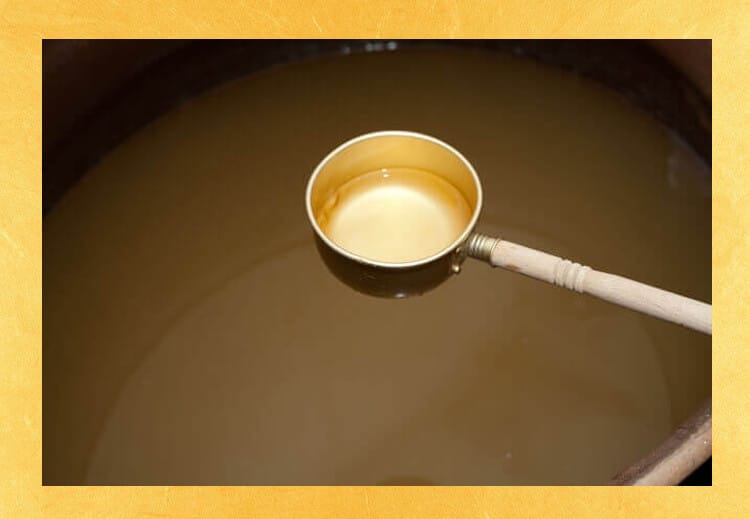
Sake brewing is a preparation stage for brewing sake,The first process of substantial sake brewingIt becomes. The name is also called sake starter, and when you lick it, you will feel sweet and sour.
In sake brewing and sake brewing,Yeast, lactic acid, sugarThese three are important, and there are three ways to make a liquor in order to prepare these three.
recent years,More than 90% of commercially available sake is made from fast brewed sake.
-Ginger
A lactic acid beverage that uses live lactic acid bacteria.
-Mountain ruins
It was created in the Meiji era and saved some of the labor of ginger.
-Quick brew
A simple one that was born in the latter half of the Meiji period and does not use lactic acid bacteria.
Sake mother ingredientsRice bran, steamed rice, and feed water, each at a ratio of 1: 4: 6Put in a tank and mix.
In ginger and mountain ruins,Lactic acid bacteria in natureComes into the tank and lactic acid ferments to produce lactic acid.
On the other hand,Put commercially available “synthetic lactic acid” in the tankIt has a mechanism to ferment lactic acid to make lactic acid. for that reasonYou can make a liquor quickly..
Yeast appears when lactic acid is produced by the above three methods, and the concentration of lactic acid is high enough to sterilize.
Alcohol fermentation will proceed with “Kyokai Yeast” and “Yeast cultured in-house”.
Sake production process (4): Three-stage preparation / Moromizu

What is three-stage preparationA traditional technique that Japan has been proud of since the Muromachi period in a way to increase the number of sake mothers effectively..
In the era when there was no technology for three-stage preparation, the work of making a liquor was hard work, but the technique for three-stage preparation was created,Succeeded in labor saving a large amount of sake brewingWas.
In that respect, three-tiered construction is a very innovative technology.
As the name suggests, three-stage preparation is a technology that increases the amount of liquor in 3 times.
1,First attendance
A process of adding 2 times the amount of rice bran, steamed rice, and feed water to the liquor. Then leave it for about 1 days to wait for the yeast to settle down.
2,Nakazoe
A process of adding 4 times the amount of rice bran, steamed rice, and feed water to the liquor.
3,Attachment
A process of adding 8 times the amount of rice bran, steamed rice, and feed water to the liquor.
Efficiently increasing the number of sake mothers through three processes and making moromi.
By slowly fermenting the moromi, the yeast will increase and the alcohol concentration will gradually increase. In addition, lactic acid is diluted well, making it very easy to drink.
Even though it is a brewed sake, it has never been seen in the world that the alcohol concentration rises to near 20, and sake brewing is a Japanese brewing technology only in JapanI can say that.
Sake production process ⑤: Upper tank
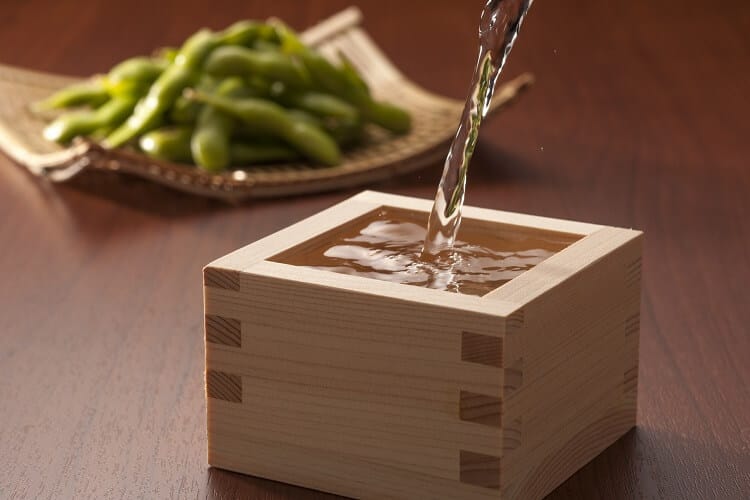
The upper tank is a squeezing operation that separates sake into liquid and solid.. The liquid that squeezes moromi is sake, and the remaining solid is sake lees.
The method of the upper tank is roughly divided into the following three.
Bagging
Bag squeezing is also known as “squeezing potatoes” or “hanging the neck”..
Because bag squeezing is done manually, it can be said to be a time-consuming and time-consuming method. for that reasonUpper tank method used only for special luxury sakeIt will be.
The method of squeezing bags is to hang a bag filled with moromi with a string and collect only the buds dripping by gravity.The most polite way to squeeze because no pressure is appliedI can say that.
You can make clear sake with no miscellaneous taste,It is a method that can only be taken with limited liquor because it takes time and effort and productivity is worse than anything else.
Also, the sake lees left after squeezing into the bag will not be on the market because they are returned to the moromi and squeezed again.
Because alcohol can deteriorate at high temperatures,Squeezing is basically done early in the morning or early in the cold.
Tank squeezing
The name squeezed from a squeezer that is rectangular and shaped like a vertical ship.
The way to squeeze is to stuff the moromi in a cloth bag, fold the mouth of the bag, arrange it, and arrange it.Because it is squeezed by gentle pressure, the squeezing method does not produce a nuisance.
Liquor is named after the time it comes out.
The first liquor that comes out is a liquor that comes out naturally just by loading a bag of moromi.`` Rough run ''Is called. It is a violent liquor that contains gas and is characterized by freshness.
Next, the liquor that is squeezed out with light pressure from above"In-room" or "In-house"Is called. It is the most smooth and well-balanced sake in the squeeze.
Finally, the sake is squeezed out with strong pressure."Blame"Is called. It is a sake that is rarely sold alone and blended for sale because it has a miscellaneous taste and no breadth.
The taste of liquor changes drastically at the timing of squeezing out in this way, and its value also changes.
Squeezing
Squeezing is characterized by being able to squeeze automatically and speedily with high pressure applied by a large squeezer.. From manufacturer name"Yabuta"Sometimes called.
Many sake breweries useTypical method of upper tankYou can say that.
Because it can be squeezed at a higher pressure than squeezing the tank,A very efficient way to make a lot of sake from the same amount of moromiis. In addition, it can be squeezed in a short time,Sake is hard to oxidizeIt is also said.
The sake lees made by pressing`` Plate ''It will be a familiar liquor lined up in the supermarket.
Japanese sake production process ⑥: burning
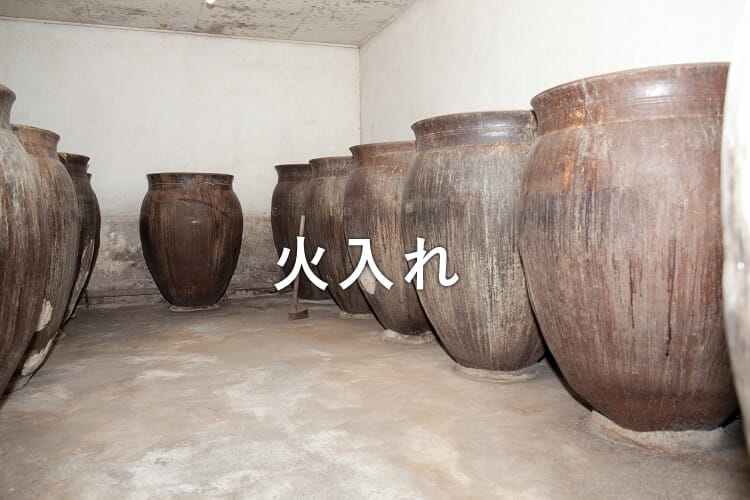
General milk is sold after being pasteurized at about 120 ℃, but some are pasteurized at about 70 ℃.
Pasteurized milk has less protein denaturation and is tasty and tasty.
Sake is"Fire"Say,Pasteurization similar to milkdoing.
Pasteurization is a technology that was born in the Muromachi period, and by sterilizing it in an exquisite low temperature zone, it suppresses the yeast action without altering the sake and stops fermentation..
It can be said that this is a high technology that supports sake brewing from the Muromachi period to the present day.
There are two main methods for burning,"Gabion Fire" "Bottle Fire"Is called.
The feature of “Gabion Fire” is that a spiral pipe called gabion is installed in a cylindrical container..
Boil the hot water in the cylindrical container and pass the sake in the pipe62 ℃ to 65 ℃Warm up.
"In-bottle heating" is to loosen the bottle cap lightly and then put it in hot water to warm the inside from 62 ℃ to 65 ℃..
Then retighten the stopperCool in steps with lukewarm water, cold water, and ice water.
Both are traditional technologies, but in recent years new machines have also been developed that are easier to perform than before.
The name of sake changes with the timing of burning. In general sake,2 times before storage and before shipmentAlthough the sake is burned, the same sake is called differently according to the timing of burning and the number of times of burning.
Fresh sake
Raw sake with no fire. Sometimes referred to as “real” or “live”.
Raw raw sake
For raw sake without burningRaw sake that does not adjust the alcohol content without adding water.
The alcohol content is from 17 to 19, which is higher than general sake. Recently, there is also an alcoholic beverage with a low alcohol content level of 15.
Fresh storage
Store raw,Liquor that is fired 1 times before shipment.
Raw stuffed sake
Liquor that is fired 1 times before storage and not fired at the time of shipment. It is also called “Hiya-Goshi”.
The purpose of burning isDisinfection of fire-fung bacteria and inactivation of residual enzymeIt is two. If you make a mistake in the timing of firing,Raw twists and miscellaneous tastes occur, increasing the possibility of quality degradation.
In order to make high quality delicious sake, burning is the last big point.
Summary
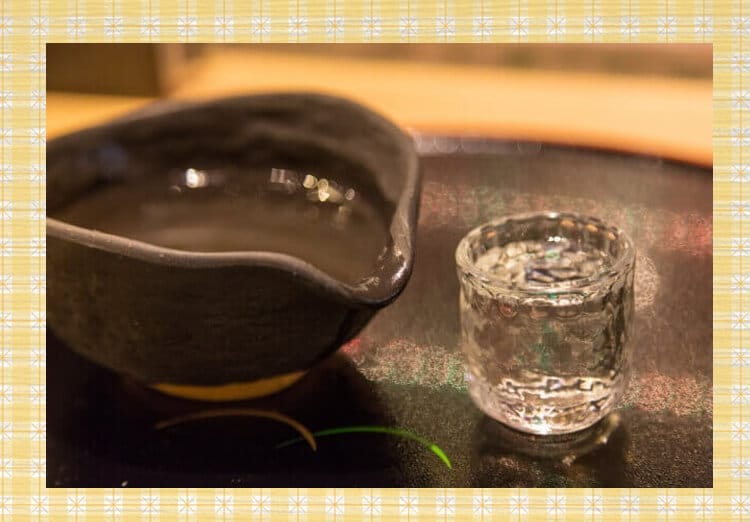
This time we talked about the sake production process.
There are six major processes in the production of sake. Each is an important task that affects the quality of sake, so there is no doubt that the quality of sake will change depending on the skills and experience of the sake brewery.
In order to drink delicious sake, please be sure to know about the manufacturing process of sake.


